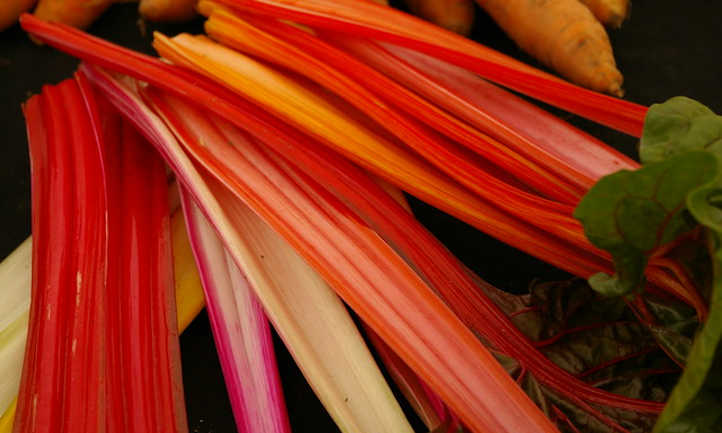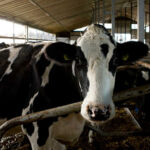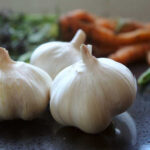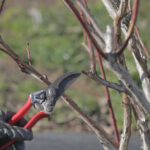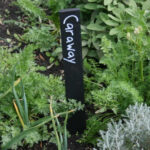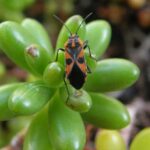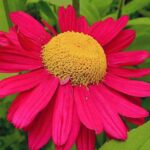Rhubarb is a long-lived perennial that makes a great addition to any garden. It’s an easy growing plant that can produce for decades when properly cared for. Although the leaves and roots are poisonous, the stems are commonly used as the base for many desserts. Rhubarb is popular in pies, jams, jellies, and compotes.
Some varieties can live up to 20 years, and the plant can grow to be several feet wide and several feet tall. Rhubarb crowns spread underground and may require division every 3 to 4 years to keep the plant productive and manageable. Rhubarb grows best in temperate or cool zones.
Let’s learn more about how you can grow rhubarb plant!
Quick Care Guide
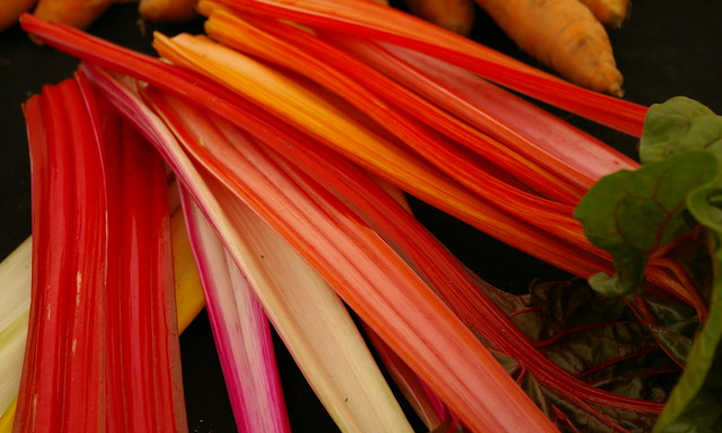
| Common Name(s) | Rhubarb |
| Scientific Name | Rheum rhabarbarum or Rheum x. hybridum |
| Days to Harvest | 2 years after planting crowns or starts, 3 years if starting from seed |
| Light | Full sun |
| Water | Well-drained |
| Soil | Rich, full of organic matter like rotted manure |
| Fertilizer | Lots of compost. Alternately, high-nitrogen in early spring. |
| Pests | Aphids, snails, slugs, rhubarb curculio beetle, potato stem borer |
| Diseases | Leaf spot, grey mold, pythium root and crown rot, anthracnose leaf spot and stalk rot |
All About Rhubarb
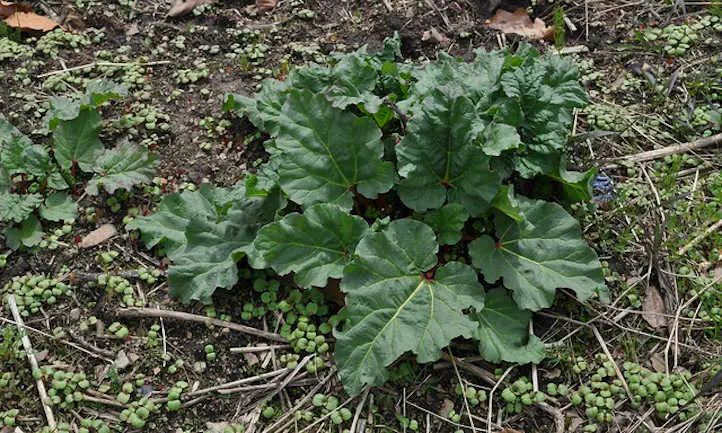
Rhubarb (Rheum rhabarbarum) has been bred over the years for its edible stalks. It is unsure where the Rheum x. hybridum variety originated, but rhubarb hybridizes very easily. Both R. rhabarbarum and Rheum rhaponticum were grown in Europe before the 18th century, primarily for medicinal use. By the 18th century, these plants, in addition to Rheum x. hybridum, were grown throughout England and Europe as vegetables. Since the original plants were selected from open-pollinated seed, it’s almost impossible to determine the origins of today’s rhubarb plant! The variety cultivated today in the chef’s garden tends to be Rheum x. hybridum.
Rhubarb has been nicknamed “pieplant” because of how often the stalks are used to bake pies. However, the leaves of rhubarb contain oxalic acid and anthrone glycosides and are poisonous. You should never eat the leaves, roots, or any part other than the stalks. The leaves are triangular shaped and can grow as large as 2 feet across.
Traditionally used in sweet dishes, there is an interesting reason why rhubarb is officially labeled a fruit. Botanically, this is a vegetable. However, in 1947, U.S. Customs changed rhubarb’s designation from a vegetable to a fruit because import taxes were lower on fruits than vegetables.
Popular varieties include Cherry Red, Chipman’s Canada Red, Crimson Red, Glaskin’s Perpetual, Holstein’s Bloodred, Turkish, and Victoria. Each cultivar has a different color and size, ranging from light green to pink to blood-red!
Planting Rhubarb
Planting out your rhubarb is the easiest part. Space them 3 feet to 4 feet apart with the roots 2 inches deep in the garden. You can grow rhubarb in raised beds or do your planting in the ground, but these will require a considerable amount of garden space. Planting into your garden should happen in the spring just after the ground thaws, or late fall when the plants are dormant.
Care
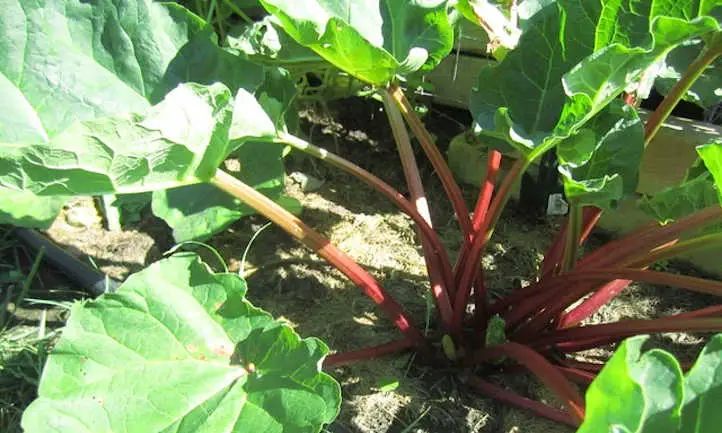
Sun and Temperature
Plant rhubarb in full sun, with at least 6 hours of sun. If you live in a zone warmer than 8, you should select a location with some afternoon shade. Rhubarb thrives in zones 3-8. In zones 9 and 10, it may be grown as an annual. Some cold-tolerant varieties may be grown in zone 2b with a cold frame. Rhubarb needs a cold, dormant period to rest, and then will start to grow stalks vigorously in early spring. It’s often one of the first plants to produce!
Rhubarb does best where winter temperatures fall below 40 degrees and where summers are around 75 degrees. Excessive heat and moisture will cause the crowns to rot, and the plant will never go into dormancy. This will most likely make the plant behave like an annual. In cooler climates where it thrives, rhubarb undergoes dormancy in cold temperatures to store energy for the next growing season.
Rhubarb can be somewhat frost-tolerant. Discard any black or mushy stems that have been damaged by frost. Otherwise, check the variety you are growing to learn more about its cold tolerance. Many varieties are grown in Canada and Alaska and can withstand -40 degrees! This is a great cool-climate perennial.
Rhubarb can be grown in pitch black greenhouses called “hothouses”. There, the stalks of the rhubarb grow pink and sweet, and the leaves turn yellow from the lack of chlorophyll that comes from sunlight. Rhubarb grown under natural conditions has a more acidic taste, which is usually sweetened with sugar when cooked. Rhubarb growing outside can also be ‘forced’, where a dome is placed over the plant to create warm and dark conditions, which forces early growth.
Water and Humidity
You should always water your rhubarb plant in the mornings, and never in the heat of the day, so it has time to dry out but doesn’t suffer from excessive transpiration. Keep your rhubarb well-watered during the first year to encourage healthy growth with a soaker hose. One inch of water per week during the growing season is recommended.
Reduce watering for your rhubarb plants during the late fall and winter season, as the plants will enter a dormant period where it is not producing new growth. Rhubarb plants are susceptible to crown rot from overwatering or excessive moisture.
Soil
Rhubarb likes rich, well-drained soil. Amend your garden soil with compost and organic matter like rotted manure when planting rhubarb. If drainage is an issue, you might want to consider a raised bed or work in a little perlite. The soil pH should be between 6.0 and 6.8.
Fertilizer
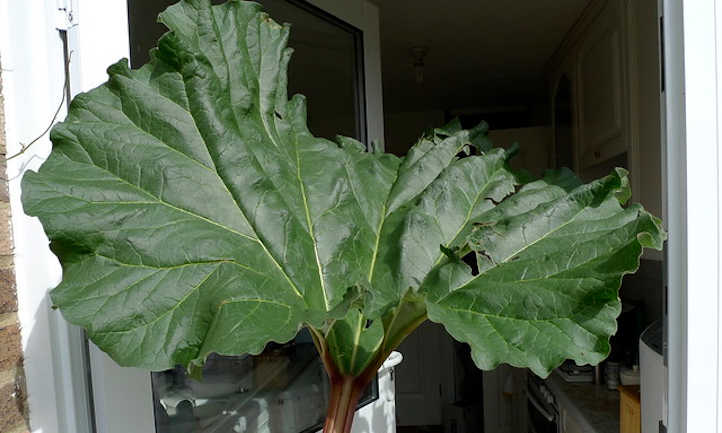
Rhubarb plants are heavy feeders. Start by heavily amending your soil with compost or composted cow manure or horse manure. Other organic materials are also excellent additions. This gets your plant started.
For first year rhubarb growth, do not use a nitrate-based fertilizer. Early contact with nitrates can severely hurt or kill your young plants. Avoid chemical fertilizers for that entire first year, supplementing with additional composted material as necessary. In subsequent years, apply a light sprinkling of a high-nitrogen fertilizer just as the ground thaws in spring. This allows the fertilizer to gradually move into the soil and reduces fertilizer burn to the roots.
Pruning
Rhubarb can produce a pretty flower, but you should always trim the flower stalks to conserve energy because flowers take energy away from the plant. You will also need to trim the rhubarb leaves from the stalks before eating the plant. If any stalks become dark or mushy, you should trim them from the plant. At the end of the season when the leaves die naturally, you should trim rhubarb stalks back to the crown, taking care not to bury the crown below the soil surface when applying mulch or compost.
Every 3-4 years, divide the rhubarb crowns while still dormant. New growth will occur on the outside of the crowns.
Propagation
The fastest way to propagate rhubarb is by division. Rhubarb should be divided in early spring or fall, before any new growth emerges or after it goes dormant. Use a sharp shovel or knife to cut off a piece of the crown that has at least a few knobs to it, which will form new shoots and leaves.
Pieplant spreads quickly and should be divided every few years to promote new growth since the new growth is always on the outside of the crown. This is the fastest way to establish a new rhubarb plant.
Starting from bulbs is also an option, but it takes longer for plants to reach maturity.
Harvesting and Storing
Now that you know how to grow and care for your rhubarb plants, let’s talk about how to use them! Rhubarb can produce for decades, so it’s good to have a few standard recipes to follow each year.
Harvesting
Harvest stalks as soon as they have reached full length, early in the season. The timing will depend on the variety you are growing, so be sure to familiarize yourself with the cultivar you have in your garden. Depending on the variety, they’ll be between 12 inches long and 24 inches long at maturity.
To harvest rhubarb, grasp the stalk firmly at the base, twist, and pull away from the plant. If this fails, you can cut the stalks off at the base with a sterilized knife or shears.
Once you pull the stems off, remove the rhubarb leaves and compost them. These contain poisonous oxalic acid and should never be consumed. Keeping the leaves on the plant can also cause it to wilt faster. If you won’t be cooking your rhubarb immediately, you can freeze it to preserve it.
You can harvest stalks until mid-summer, usually June or July before you should stop harvesting and let the plant conserve its energy for the next year. Try to stagger your harvests, and leave the center stalks in place to aid the plant’s regrowth.
Do not harvest too many stalks in the first year. In the second year, you can harvest more stems. In the following season, you may increase your harvest, but try to leave at least three stems in place. Always allow the plant to rest and grow before the harvest season next year.
Storing
Fresh rhubarb should be stored in the refrigerator to prevent wilting. Stand it up in a glass and keep the glass watered, changing it for fresh regularly. You can also cover it with a plastic bag for extra humidity. Use the stems within a week, or consider alternative long-term storage methods.
If you plan to preserve your rhubarb by freezing it, try growing varieties such as Sunrise or Valentine. If you prefer canning, try McDonald’s Canadian Red, or another variety suited to jams and jellies. One unique variety called German Wine is purportedly good for making wine that tastes similar to rose!
Troubleshooting
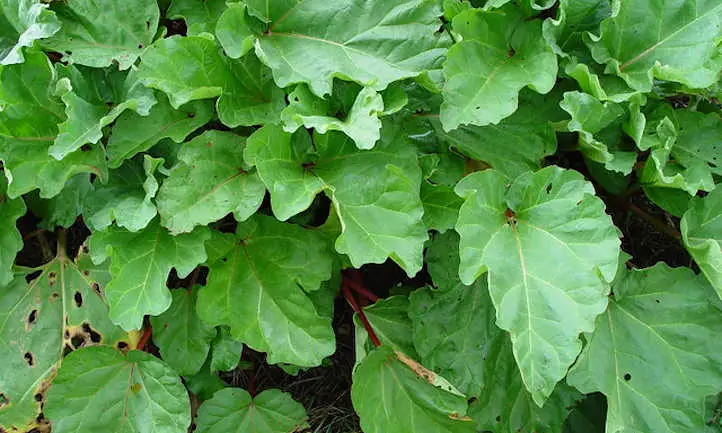
Now let’s talk about some things that might go wrong when growing rhubarb plants and how you can handle them!
Growing Problems
Rhubarb is easy to maintain once established. However, it struggles in heat and humidity. In the south, it is usually grown as an annual plant instead of a perennial. Because of the warm winter temperatures, it’s never able to achieve dormancy there. Rhubarb doesn’t like to be hot and is best suited to cool climates. If growing in hot climates, grow as an annual and provide afternoon shade.
Rhubarb crowns can rot if overwatered or left in poorly-drained soil. Take care to keep your rhubarb soil light and moist, but not soggy. If drainage is an issue, consider a raised bed or amending the soil.
Pests
Damage from aphids, slugs, and snails on the leaves does not affect the edible part of the plant, but you should use normal controls like neem oil or insecticidal soap for aphids. Slug and snail bait will draw those pests away from your plants.
Another pest is the rhubarb curculio beetle. Adults can be picked by hand. They will fall off the leaves if you shake the plant over a tarp or sheet of plastic. There is no chemical control that is currently recommended for the rhubarb curculio beetles, but you can maintain a weed-free rhubarb patch to prevent them from breeding in nearby plants.
Another pest of rhubarb is the potato stem borer. The moths lay their eggs in the grass in the fall, and the new caterpillars hatch in the spring. Similar to the rhubarb curculio beetle, it is recommended that you remove weeds from your rhubarb plant to control any pest populations from breedings. Check with your local agricultural extension for control methods that work in your region.
Diseases
A common disease of rhubarb is crown rot. Once detected, you should cut the affected portion of the crown away, as there is no treatment. Be sure to reduce watering to protect the remaining crown.
Rhubarb may develop anthracnose leaf spot or stalk rot. Remove all infected leaves to prevent the disease from spreading. Stalk rot will cause stalks to turn brown or black and wilt. All infected stalks should be removed, and diseased plant tissue should be disposed of, not composted. These two diseases can affect stressed plants. Fertilize your rhubarb plants the following spring to increase their health. Try to keep good air circulation around them as well.
Botrytis cinerea is a fungus that overwinters on rhubarb plants. It looks like a grey mold and thrives in warm winters. Copper fungicides are effective for control.
Root rot occurs in overwatered conditions. Make sure your soil drains excess moisture.
Frequently Asked Questions
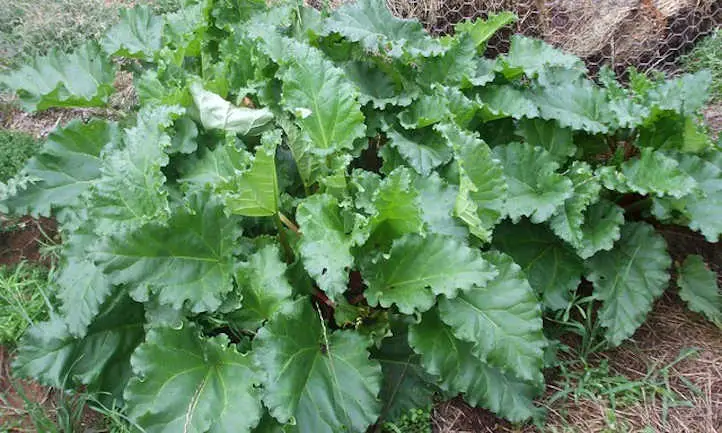
Q: When should you not pick rhubarb?
A: Stop harvesting your rhubarb after the 4th of July! This allows the plant to reserve energy for the following year. The stalks will also get thinner and the leaves more poisonous in later months.
Q: How long does rhubarb take to grow?
A: Rhubarb grown from bulbs should not be harvested until the third year, but it can be harvested in as little as one year when grown from divisions.
Q: What should not be planted near rhubarb?
A: Do not plant rhubarb near legumes or sunflowers because they can attract rhubarb pests.
Q: How do you winterize rhubarb?
A: Cut back any damaged stalks and cover the crown with 2-4 inches of well-rotted composted material or mulch. The next year, new growth will emerge. If using wood chips, pull them back from the crown as the ground thaws.

